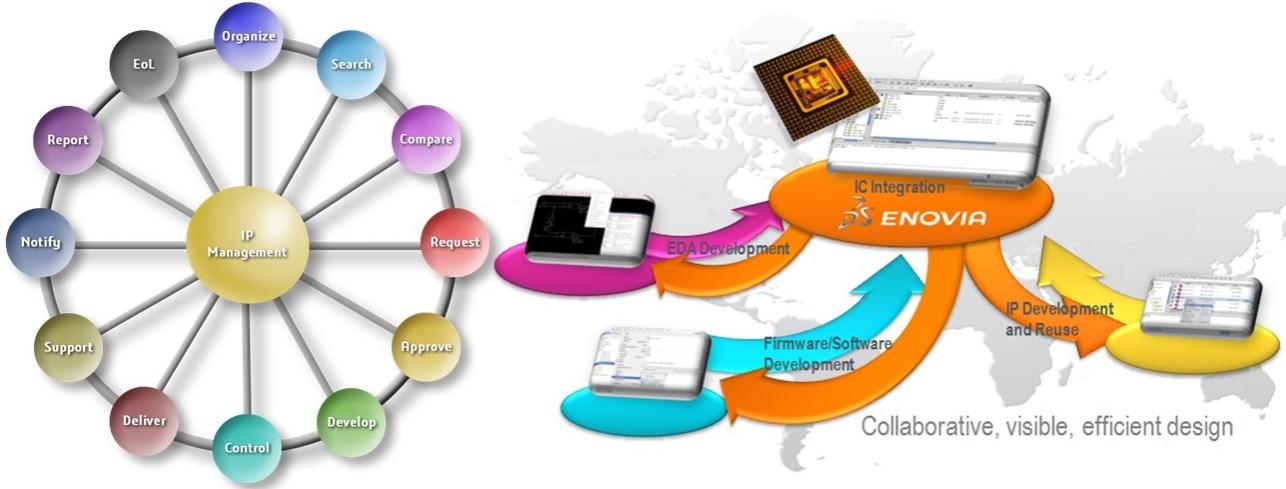The world of IPs in the semiconductor landscape has completely changed the semiconductor design scenario, specifically the fabless design space. Today IPs are key components of any large semiconductor design, in the same way as auto ancillaries in auto design. It’s just the beginning, in the days to come we will see SoCs just as a collection of IPs interconnected together. All design activities will concentrate towards creating robust, high quality IPs and SoC providers will concentrate on selecting and integrating best IPs. This hypothesis is supported by rapid growth in IP business and its providers across the world; design IPs and even verification IPs. Does it look like a simple task managing IPs amid ever growing volume of IPs? It’s no longer a ‘design data management only’ task. It’s just a tip of the iceberg; a much larger problem to solve is hidden beneath. If managed well, it can provide rich dividends to the SoC providers; else they can incur heavy losses.
This reminds me about Dassault’ssemiconductor strategy I bloggedabout a few months ago which moves semiconductor space from productivity to profitability. And ‘Enterprise IP Management’ is a key thrust area in that strategy. Use of IPs can definitely increase productivity to a large extent; these days there are VIPs to accelerate design verification as well. However that may not necessarily translate into profitability. So what needs to be done?

It was a pleasant occasion when I came across a video interviewof Michael Munsey, Director Semiconductor Strategy, Dassault Systems organized by EDACafein 51[SUP]st[/SUP] DAC. Although Michael talked about four major strategies, viz. Design Collaboration, Enterprise IP Management, Requirements Driven Verification and Manufacturing Collaboration in the context of silicon thinking experience for profitability, Enterprise IP Management, an area which is about to explode, was the one which caught my major attention to know about some insights into this strategy.
Michael rightly says that Dassault’s emphasis is on tying the engineering domain with the business domain to bring the value up at the business level, i.e. make it profitable for all parties in the value chain. While it’s essential for IPs to be robust with production quality, it’s a bigger challenge to select and use right IPs in right designs to augment that value in totality. Amid a large volume of IPs with companies (suppliers as well as consumers), criteria to select, use and mange those IPs are abound. Some of the must criteria are quality, validation process, legacy carried by an IP, its past usage, security, safety, licensing and reliability. With the increased use of IPs in SoC, third party IPs are increasing, making the problem domain more critical; one must look at the authenticity of an IP, has it been partnered with someone, who has used it, what is the guarantee of quality and so on.
So, what is the IP solution Dassault is working on to provide at the Enterprise level? Although this space will see continuous enrichment from Dassault with the progress of IP world, the key capabilities to manage the whole process of IP selection, validation, and use (both from internal as well as external sources) for SoC integration include areas such as –
IP Cataloging – This includes operations such as stocking (both from internal as well as third party), indexing, searching, attaching information tags which may include a host of information about the IP, track record of its usage and defect resolution, the third party and so on. The SoC integrator can easily select an IP with appropriate criteria and properties which can add desired value to the design up the design chain.
IP Governance – This includes the process of creating IPs, its deliverables, the validation process, qualification criteria for third party IPs, licensing, authentication of third parties etc. The standards to pass the gate for use must be in place for both internal as well as external IPs.
Issue & Defect Tracking – This is a complete system for tracking issues and defects and the process of change management for their resolution. It’s linked with the cataloging for propagating necessary tracking information up the design chain.
IP Security – With the growth of IPs across the world, IP security has become one of the most important criteria for the success of semiconductor designs. In order to secure IPs and their authenticated use, a proper access control mechanism for them must be in place. Also, with the use of IPs, the propagation of their security tags up the design chain must be done to secure the design as well.
IP Sourcing – Although some aspects of third party IPs from registered vendors are controlled in IP Cataloging and IP Governance, a whole set of process is required for IP sourcing from multiple vendors from across the geography. The selection of vendors itself can be a critical task. Add to it comparison of various properties, quality, cost and other criteria in selection of proper sourcing for IPs.

There can be many other areas to manage such as royalties on IPs, metadata management across large enterprises and others. Dassault enables a new platform based design management style which can be modular with respect to a particular design, its management with IPs used, cataloging, sourcing and procurement, governance, security and different variants of the design itself. With ENOVIA DesignSync and IP Management solutions, it creates a single environment to manage internal and external IPs as well as links to design and processes.
Stay tuned to hear more on the profitable strategies for semiconductor design solution. Dassault has been successful in deploying such strategies in other industries such as mechanical and industrial. Now it’s time for semiconductor industry where Dassault has large install base in top semiconductor companies.

More Articles by Pawan Fangaria…..
Share this post via:






Quantum Computing Technologies and Challenges